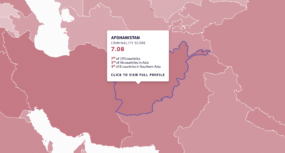Posted on 20 Aug 2020
India’s socio-economic realities have evolved significantly over the past four decades, particularly as far as attitudes to wealth accumulation are concerned. Gold is today no longer negatively associated with crooked businessmen, but rather positively with the consumerist aspirations of middle-class India. It is used to project enhanced family status at events such as the ‘great Indian wedding’, and is perceived as a high-return investment and a hedge against inflation.
Demand for gold has consistently risen 14% annually since 2001, with prices altogether increasing eight-fold. The Indian love affair with gold continues even as the economy strains under the weight of gold imports that degrade the fiscal balance. Gold is metaphorically to many Indians what opium was to the Chinese in the 19th century: an addictive escape from institutional decay and social stagnation. But hoarding gold pits the individual and their family against the government and its need to keep liquidity flowing in order to grow the economy.
This report examines three questions:
1. Why did an illicit economy around gold imports emerge in India?
2. What are the methods and routes used by smugglers?
3. Why has the illicit economy proved resilient to countermeasures by the government?




